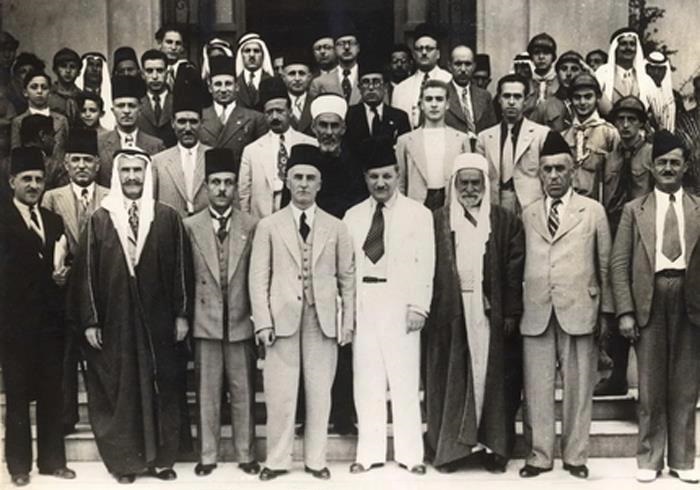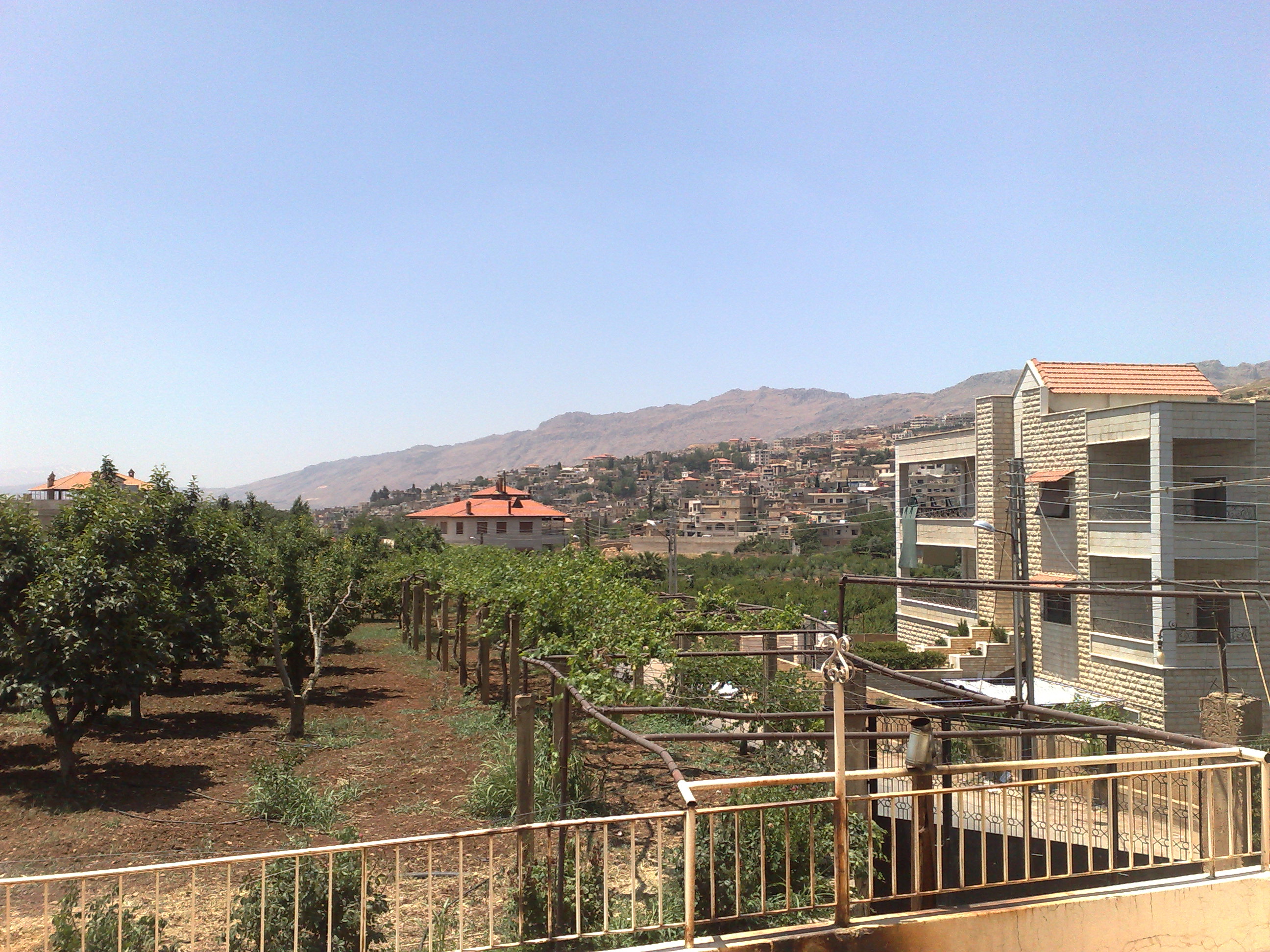|
Bloudan
Bloudan ( ar, بلودان, Blūdān) is a Syrian village located 51 kilometers north-west of Damascus, in the Rif Dimashq Governorate; it has an altitude of about 1500 meters. In the 2004 census by the Central Bureau of Statistics it had a population of 3,101.General Census of Population and Housing 2004 Syria Central Bureau of Statistics (CBS). Rif Dimashq Governorate. The majority of the inhabitants are s, an ... [...More Info...] [...Related Items...] OR: [Wikipedia] [Google] [Baidu] |
Bloudan Conference (1937)
The Bloudan Conference of 1937 (Arabic transliteration: ''al-Mu'tamar al-'Arabi al-Qawmi fi Bludan'') was the first pan-Arab summit held in Bloudan, Syria on 8 September 1937. The second Bloudan conference was held nine years later in 1946. It was called by the Arab Higher Committee in response to the Peel Commission which recommended the partition of Palestine, then under British control, into Arab and Jewish states.Mattar, p.104. The Peel Commission's recommendations were rejected by the participating delegates while the 1936–39 Arab revolt in Palestine against the British authorities and increased Jewish immigration in Palestine was widely supported. The Bloudan Conference held historical significance for being an early display of collective Arab concern regarding the Zionist movement.Commins, p.72. Goals and participation The Arab Higher Committee originally petitioned the British Mandate administration to hold the conference in Jerusalem, but the request was rejected an ... [...More Info...] [...Related Items...] OR: [Wikipedia] [Google] [Baidu] |
Al-Zabadani
Al-Zabadani or Az-Zabadani ( ar, الزبداني, az-Zabadānī) is a city and popular hill station in southwestern Syria in the Rif Dimashq Governorate, close to the border with Lebanon. It is located in the center of a green valley surrounded by high mountains at an elevation of around 1,100 m. Its history is linked to the oldest capital in history, Damascus. It is located to the right of the international road linking Damascus to Beirut, in the middle of the distance between Damascus and Baalbek, in a mountain valley in the Syrian mountain range, where it rises between 1,150 and 1,250 meters above sea level. Zabadani is located in the semi-arid to semi-humid region, with an average rainfall of 500 mm per year. It is bordered by two mountain ranges, Mount Senir to the west and Jabal Al Shaqif to the east, and in the middle of it is a green carpet that forms the Zabadani Plain. According to the Syria Central Bureau of Statistics (CBS), in the 2004 census Al-Zabadani had a popu ... [...More Info...] [...Related Items...] OR: [Wikipedia] [Google] [Baidu] |
Al-Zabadani District
al-Zabadani District ( ar-at, منطقة الزبداني, manṭiqat al-Zabadani) is a district of the Rif Dimashq Governorate in southern Syria. Administrative centre is the city of al-Zabadani. At the 2004 census, the district had a population of 63,780. Until February 2009, the sub-districts of Ayn al-Fijah and al-Dimas were part of Al-Zabadani District before being incorporated to form the newly established Qudsaya District. The town-resort of Bloudan Bloudan ( ar, بلودان, Blūdān) is a Syrian village located 51 kilometers north-west of Damascus, in the Rif Dimashq Governorate; it has an altitude of about 1500 meters. In the 2004 census by the Central Bureau of Statistics it had a popu ... in the al-Zabadani district is a favourite tourist destination for locals and foreigners. Sub-districts The district of al-Zabadani is divided into three sub-districts or nawāḥī (population as of 2004): Settlements According to the Central Bureau of Statistics (CBS), ... [...More Info...] [...Related Items...] OR: [Wikipedia] [Google] [Baidu] |
Damascus
)), is an adjective which means "spacious". , motto = , image_flag = Flag of Damascus.svg , image_seal = Emblem of Damascus.svg , seal_type = Seal , map_caption = , pushpin_map = Syria#Mediterranean east#Arab world#Asia , pushpin_label_position = right , pushpin_mapsize = , pushpin_map_caption = Location of Damascus within Syria , pushpin_relief = 1 , coordinates = , subdivision_type = Country , subdivision_name = , subdivision_type1 = Governorate , subdivision_name1 = Damascus Governorate, Capital City , government_footnotes = , government_type = , leader_title = Governor , leader_name = Mohammad Tariq Kreishati , parts_type = Municipalities , parts = 16 , established_title = , established_date ... [...More Info...] [...Related Items...] OR: [Wikipedia] [Google] [Baidu] |
Districts Of Syria
The 14 governorates of Syria, or ''muhafazat'' (sing. ''muhafazah''), are divided into 65 districts, or ''manatiq'' (sing. ''mintaqah''), including the city of Damascus. The districts are further divided into 281 subdistricts, or ''nawahi'' (sing. ''nahiya''). Each district bears the same name as its district capital. Districts and subdistricts are administered by officials appointed by the governor, subject to the approval of the minister of the interior. These officials work with elected district councils to attend to assorted local needs, and serve as intermediaries between central government authority and traditional local leaders, such as village chiefs, clan leaders, and councils of elders. List of districts The 65 districts are listed below by governorate (with capital districts in bold text). The city of Damascus functions as a governorate, a district and a subdistrict. Parts of Quneitra Governorate have been under Israeli occupation since 1967 (see Golan Heights). Cen ... [...More Info...] [...Related Items...] OR: [Wikipedia] [Google] [Baidu] |
Arab States Of The Persian Gulf
The Arab states of the Persian Gulf refers to a group of Arab states which border the Persian Gulf. There are seven member states of the Arab League in the region: Bahrain, Kuwait, Iraq, Oman, Qatar, Saudi Arabia, and the United Arab Emirates. Yemen is bound to the six countries of the Gulf Cooperation Council, based on history and culture. The term has been used in different contexts to refer to a number of Arab states in the Persian Gulf region. The prominent regional political union Gulf Cooperation Council includes Bahrain, Kuwait, Oman, Qatar, Saudi Arabia, and the United Arab Emirates. Historically, various British Empire protectorates, including the Trucial States were Arab states along the Persian Gulf. Politics Some of the Arab states of the Persian Gulf are constitutional monarchies with elected parliaments. Bahrain ('' Majlis al Watani'') and Kuwait ('' Majlis al Ummah'') have legislatures with members elected by the population. The Sultanate of Oman also has an ad ... [...More Info...] [...Related Items...] OR: [Wikipedia] [Google] [Baidu] |
Populated Places In Al-Zabadani District
Population typically refers to the number of people in a single area, whether it be a city or town, region, country, continent, or the world. Governments typically quantify the size of the resident population within their jurisdiction using a census, a process of collecting, analysing, compiling, and publishing data regarding a population. Perspectives of various disciplines Social sciences In sociology and population geography, population refers to a group of human beings with some predefined criterion in common, such as location, race, ethnicity, nationality, or religion. Demography is a social science which entails the statistical study of populations. Ecology In ecology, a population is a group of organisms of the same species who inhabit the same particular geographical area and are capable of interbreeding. The area of a sexual population is the area where inter-breeding is possible between any pair within the area and more probable than cross-breeding with i ... [...More Info...] [...Related Items...] OR: [Wikipedia] [Google] [Baidu] |
Crocker & Brewster
Crocker & Brewster (1818–1876) was a leading publishing house in Boston, Massachusetts, during its 58-year existence. The business was located at today's 173–175 Washington Street for nearly half a century; in 1864 it moved to the adjoining building, where it remained until the firm's dissolution. Background The firm was founded by Uriel Crocker and Osmyn Brewster, with the participation of their earlier employer, Samuel Turell Armstrong, later mayor of Boston and acting governor of the Commonwealth. In 1815, Crocker was made foreman of Armstrong's printing office, and in 1818 was, with his fellow-apprentice, Brewster, taken into partnership with Armstrong. The trio agreed that the bookstore would be named for Mr. Armstrong and the printing office for Crocker & Brewster. In 1821 a branch of the business was established in New York City. Five years later, it was sold to Daniel Appleton and Jonathan Leavitt, becoming the foundation of the firm, D. Appleton & Sons. Crocke ... [...More Info...] [...Related Items...] OR: [Wikipedia] [Google] [Baidu] |
Monastery
A monastery is a building or complex of buildings comprising the domestic quarters and workplaces of monastics, monks or nuns, whether living in communities or alone (hermits). A monastery generally includes a place reserved for prayer which may be a chapel, church, or temple, and may also serve as an oratory, or in the case of communities anything from a single building housing only one senior and two or three junior monks or nuns, to vast complexes and estates housing tens or hundreds. A monastery complex typically comprises a number of buildings which include a church, dormitory, cloister, refectory, library, balneary and infirmary, and outlying granges. Depending on the location, the monastic order and the occupation of its inhabitants, the complex may also include a wide range of buildings that facilitate self-sufficiency and service to the community. These may include a hospice, a school, and a range of agricultural and manufacturing buildings such as a barn, a fo ... [...More Info...] [...Related Items...] OR: [Wikipedia] [Google] [Baidu] |
Almond
The almond (''Prunus amygdalus'', syn. ''Prunus dulcis'') is a species of tree native to Iran and surrounding countries, including the Levant. The almond is also the name of the edible and widely cultivated seed of this tree. Within the genus ''Prunus'', it is classified with the peach in the subgenus ''Amygdalus'', distinguished from the other subgenera by corrugations on the shell (endocarp) surrounding the seed. The fruit of the almond is a drupe, consisting of an outer hull and a hard shell with the seed, which is not a true nut. ''Shelling'' almonds refers to removing the shell to reveal the seed. Almonds are sold shelled or unshelled. Blanched almonds are shelled almonds that have been treated with hot water to soften the seedcoat, which is then removed to reveal the white embryo. Once almonds are cleaned and processed, they can be stored over time. Almonds are used in many food cuisines, often featuring prominently in desserts, such as marzipan. The almond tree p ... [...More Info...] [...Related Items...] OR: [Wikipedia] [Google] [Baidu] |
Ba'al
Baal (), or Baal,; phn, , baʿl; hbo, , baʿal, ). ( ''baʿal'') was a title and honorific meaning "owner", "lord" in the Northwest Semitic languages spoken in the Levant during antiquity. From its use among people, it came to be applied to gods. Scholars previously associated the theonym with solar cults and with a variety of unrelated patron deities but inscriptions have shown that the name Ba'al was particularly associated with the storm and fertility god Hadad and his local manifestations. The Hebrew Bible includes use of the term in reference to various Levantine deities, often with application towards Hadad, who was decried as a false god. That use was taken over into Christianity and Islam, sometimes under the form Beelzebub in demonology. Etymology The spelling of the English term "Baal" derives from the Greek ''Báal'' ( which appears in the New Testament and Septuagint, and from its Latinized form ', which appears in the Vulgate. These forms in turn derive f ... [...More Info...] [...Related Items...] OR: [Wikipedia] [Google] [Baidu] |








